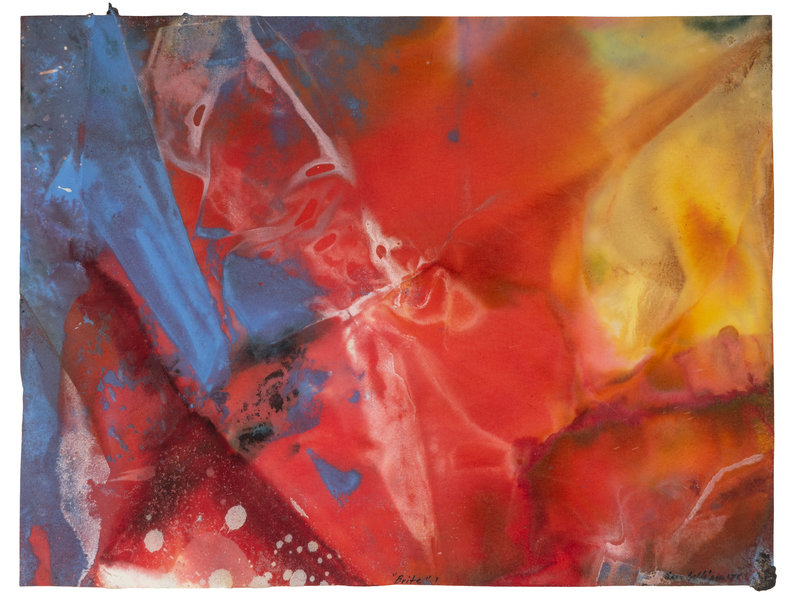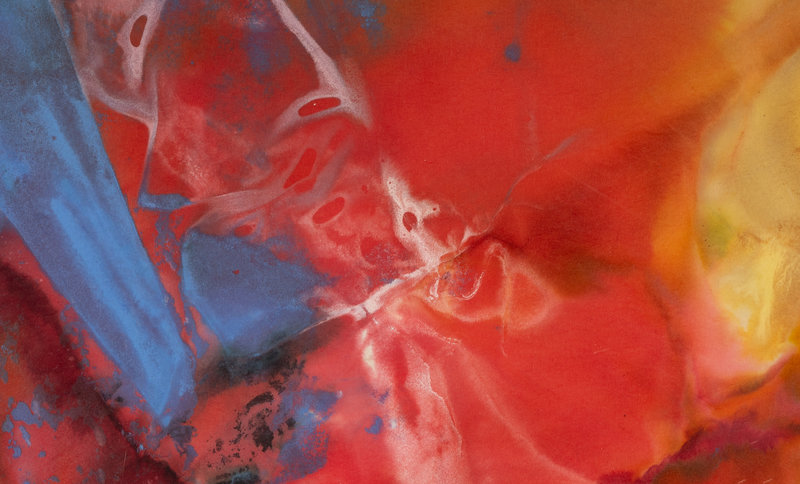Condition Report
Contact Information
Auction Specialists
Lot 12
Lot Description
Provenance:
Fendrick Gallery, Washington D.C.
Rental Gallery, Baltimore Museum of Art, Baltimore
Lot Essay:
Sam Gilliam (American, 1933-2022) is an artist particularly appreciated for his use of experimentation in richly hued paintings emphasizing color and reimaging physical space. Featured here is a work with acrylic on fiberglass paper, “Brite” I (1971) that fascinatingly capitalizes on these themes central to Gilliam’s mature career, while also displaying the development of Gilliam’s reputation to international heights.
Born in Tupelo, Mississippi in 1933, Gilliam moved to Kentucky at the age of 9, growing up in Louisville and later pursuing his artistic studies at the University of Louisville. He and his family moved to Washington D.C. in 1962 for his first wife’s job, where he began to mix with the local artistic scene. In D.C., he was ranked among the Washington Color School, a movement in part a response to New York Abstract Expressionism in which artists focused on strongly prioritizing color over other formal qualities. Among this movement, Gilliam was particularly noted for his approach to lyrical abstractionism, which can be easily seen in “Brite” I.
In this work, weightless yellows, pinks, and blues blossom from a primordial black and blue background, shot through with milky, ethereal strands of white. As described by Ann Mbuti, “It is often said that Gilliam’s painting style is inspired by jazz, since this musical genre is determined equally by clearly defined structures and by improvised variations and deviations. Structure and virtuosity merge, and experimentation is an essential part of further development.”i This element of randomness in Gilliam’s compositions allows for the examination of interesting effects of color, with the balancing of different pigments, all heavily saturated, as they seep into each other. Rather than an explosion, the effect in Brite I is unfrenzied—a calming, absorbing unfurling of color undefined by spatial limitations.
In the late-1960s, Gilliam would begin to produce what would become some of his most recognizable work, what he referred to as “sculptural paintings” or “suspended paintings,” but would more commonly be called “drape paintings,” in which unstretched canvases were suspended or draped over walls or from ceilings, rejecting previously understood ideas of the ways in which paintings exist in space and also in which the support of the painting becomes a part of the painting itself. In 1971, the year of “Brite” I, these drape paintings would be the subject of an exhibition at the Museum of Modern Art in New York: Projects: Sam Gilliam. Though smaller in scale and on paper, “Brite” I reflects a similar occupation with support. Though with a mostly defined, clean edge, some elements at the upper and lower edges escape the perfect crop, breaking through this neat divide as organic forms. In this, Gilliam questions the implied divide between the work’s beginning and end, allowing the painting to escape the artificially established bounds of the page and bleed into space. Meanwhile, the choice of fiberglass paper adds a certain opaque luminescence which lends to the shimmering suspension of the color fields therein. During this period of Gilliam’s oeuvre, he was making strides in both his local and international reputation (he would represent the United States at the Venice Biennale the next year in 1972), and Gilliam and his dealers would continue to find avenues to further his career development.
One way to promote Gilliam’s work to more private collectors was the inclusion of works at the nearby Baltimore Museum of Art’s Rental Gallery, as consigned by Barbara Fendrick of the Fendrick Gallery in Washington D.C., one of Gilliam’s dealers and main advocates in his career in D.C. The Baltimore Museum of Art Rental Gallery allowed for works to be rented by patrons in one- to two- month stints, with an option to purchase. As noted on the label on “Brite” I, this work, as consigned by Fendrick, was available for purchase in May of 1975 at the now-astonishing price of only $580.
This work thus not only illustrates the absorbing principles of Gilliam’s experimentation with color and space, but also offers an interesting record of Gilliam’s establishment into the local art consciousness.









